Animal Footprints
Rat Tracks


- Note how the front foot is almost semicircular around the central pad. The toes are placed at quite specific angles to the central pad. There are sometimes two raised bumps which track behind the central pad.
- Measurement of the distance between a. and b. in mm will give a foot size that can be used to compare individuals. Foot widths in rats range from approximately 8mm up to 22mm!
- On the back foot the central pad is split and there is a 5th toe. On this example the 5th toe (similar to our thumb) is below the central pad and to the right of it. This makes it a left foot. Sometimes raised bumps are tracked just behind the central pad.
- All 4 feet on a rat are very similar in width.
Mice Tracks
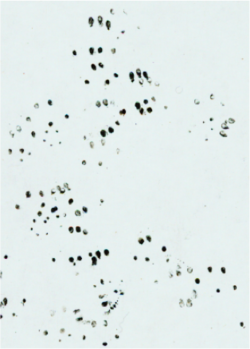
- Mice tracks can appear as a confused mass but on closer examination patterns of feet become quite evident.
- Mice have 4 toes on the front feet and a central pad, and on the back feet they have 5 toes.
- The pad on the back feet is split and there are 2 raised bumps behind the central pad.
- Three of the toes on the back feet are in a fairly straight line whereas on the front feet the toes create a semi-circular curve. The 5th toe is in a similar position to our thumb in that it comes off the foot from a lower position.
- If mouse tracks are magnified then differences in the size of feet of individuals are measurable.
Mouse Tracks
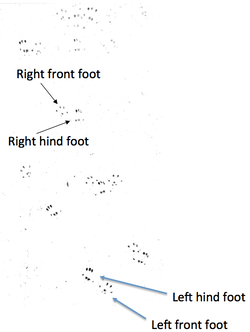
- On the hind foot 3 of the toes are in almost a straight line.
- The central pad is split and on either side are toes 1 and 5.
- Front foot is semi-circular with 4 toes and the central pad.
- Where the back foot is placed outside of the front foot we have a female.
Stoat Tracks
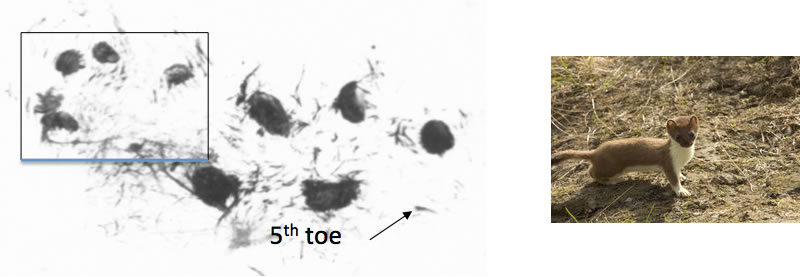
- The front foot of a stoat has 4 toes and doesn’t always track a central pad. The second and third toes are close.
- The mustelid feet are covered in fine hairs unlike any other mammals.
- The hind foot of the female is 50% wider than the front and doesn’t always track a 5th toe.
- Note the smaller front foot.
Weasel Tracks
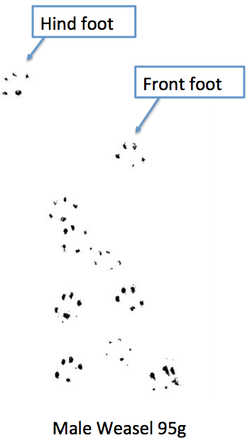
- As with stoats female weasels have back feet that are 50% wider than their front feet. The weasel has 4 toes on the front foot and 5 on the back foot but on the back foot only 4 of the toes track. The fifth toe is higher on the foot and does not track.
- Male weasels have back feet only 10% wider than their front feet.
- The undersides of the feet are covered in fine hairs.
- To notice the difference enlarge the tracks and measure.
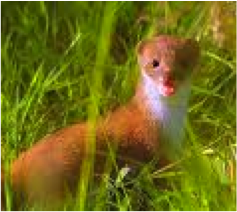
Ferret Tracks
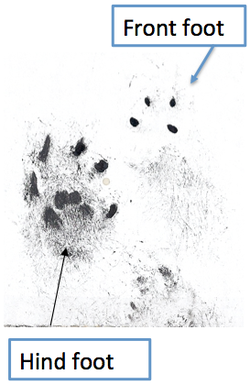
- Ferrets have very fine hairs on the underside of their feet.
- They have 4 toes on their front feet and 5 on their back.
- They do not always track a central pad on their front feet.
- The female has hind feet 50% wider then the front feet.
- There is on obvious difference between the front and hind feet, as the hind foot has a central pad with the appearance of an inverted U made up of 4 distinct sections.
- The small front foot is at the top.
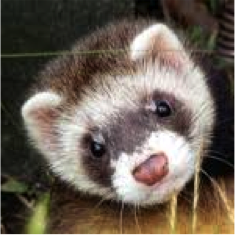
Possum Tracks
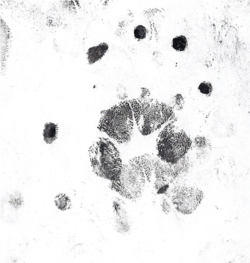
- Possums have circular feet, composed of a central pad divided into 4 main sections.
- The front feet are smaller than the back.
- The claws are 1-1.5cm out from the central pad.
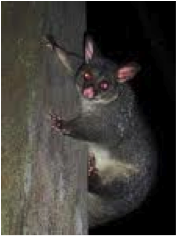
Hedgehog Tracks
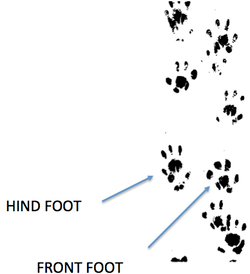
- These tracks are made by a male hedgehog. The hind feet are in line with the front feet.
- There are four toes on the front feet and five on the back feet.
- In females the hind feet would be outside the front as the females pelvis is wider than her front shoulders.
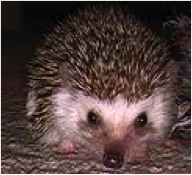
Gecko Tracks
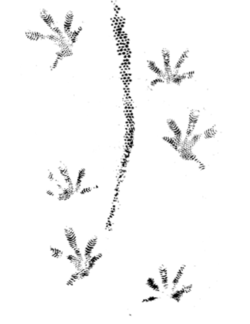
- Tracking tunnels have helped to determine the presence of species which are otherwise difficult to locate.
-
Gecko which were previously unreported in the forest areas of Tiritiri were then discovered buried deep in rock crevices after the use of tunnels had indicated their presence.
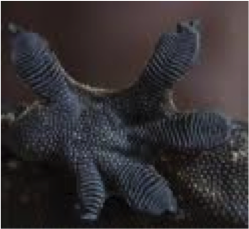
Duvauacel’s Gecko (Hoplodactylus duvaucelii)
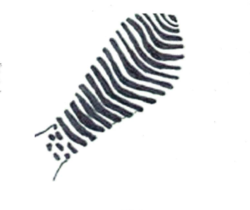
The unique pattern of the lamella on the underside of the foot enables identification of the different species of gecko.
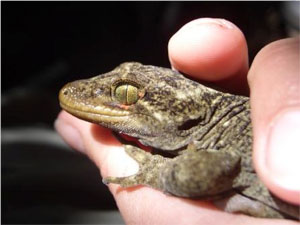
Green Gecko (Naultinus elegans)
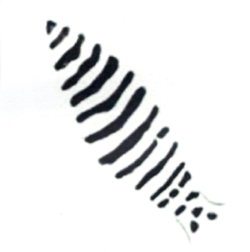
The work of the chemists has produced the ink which will get on the animals feet, cause them no harm and still provide fine detail without blurring the detail of the feet. This is the detail on the underside of a toe of the Duvaucel gecko.
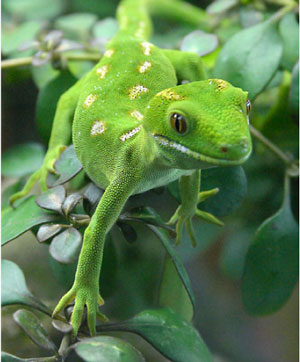
Forest Gecko (Hoplodactylus granulatus)
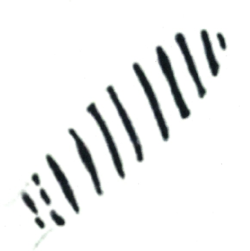
With more and more conservationists and home gardeners using tracking systems, discoveries are being made of animals that weren’t known to be in a particular area.
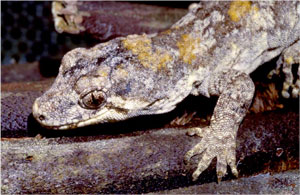
Special thanks to Warren Agnew and Gotcha Traps for providing the information and images for this game.
